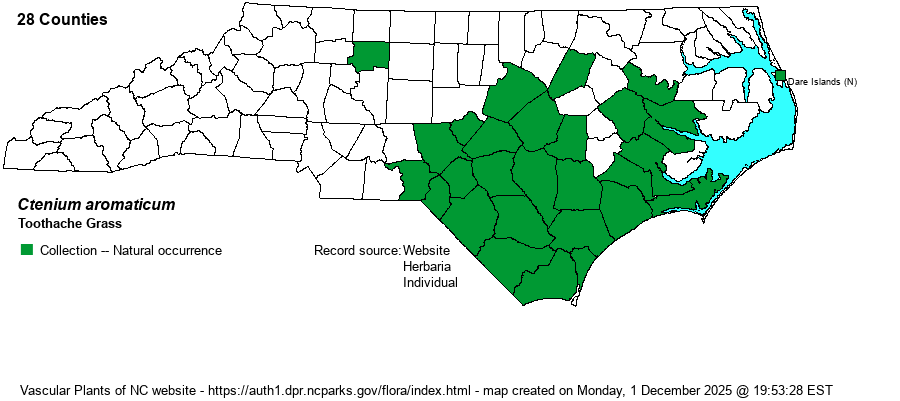| Author | (Walter) A. Wood | |
| Distribution | Coastal Plain and Sandhills. Disjunct to Roanoke Island (Dare County). Seemingly absent in the northern quarter of the Coastal Plain, though it does occur in southeastern VA. The disjunct record for Forsyth County is correctly identified and reads "meadow, Salem Creek, N.C., W.-S.", 23 July 1911, P. Schallert s.n. (DUKE). However, it is very likely a mis-labeling of a plant collected elsewhere.
Coastal Plain, southeastern VA to central FL and eastern TX. | |
| Abundance | Fairly common to frequent in well-managed pinelands, particularly in the southern lower Coastal Plain north to Craven County. Locally fairly common in the Sandhills and elsewhere in the Coastal Plain, where well-managed -- but scarce on most private lands or other poorly managed sites. | |
| Habitat | Moist to wet Longleaf Pine savannas and flatwoods, streamhead ecotones, pocosin ecotones, pitcher-plant seepage bogs. One of the characteristic plants or our fire-dependent pine savannas, and seldom found in disturbed wetlands or sites that have lacked fire for a decade or longer. |
| Phenology | Flowering and fruiting June-August. | |
| Identification | This is a unique species among our grasses, with its inflorescence held horizontally or ascending (but almost always "bent" from the angle of the stem) and looking like a fine-toothed comb, averaging 3-4 inches long. The stems usually grow 2.5-4 feet tall, from a basal clump of bicolored leaves (green above, whitened beneath). In autumn after seedfall, the inflorescences curl into attractive shapes much prized for floral arrangements. | |
| Taxonomic Comments | None
| |
| Other Common Name(s) | Orange Grass | |
| State Rank | S4 | |
| Global Rank | G5 | |
| State Status | | |
| US Status | | |
| USACE-agcp | FACW link |
| USACE-emp | FACW link |

